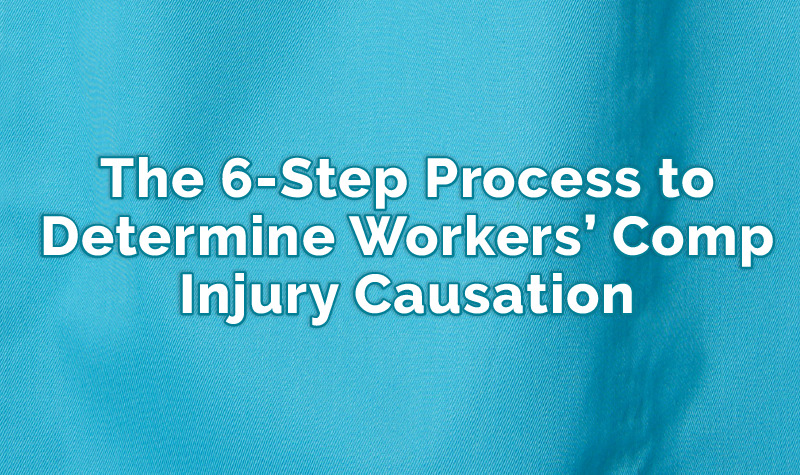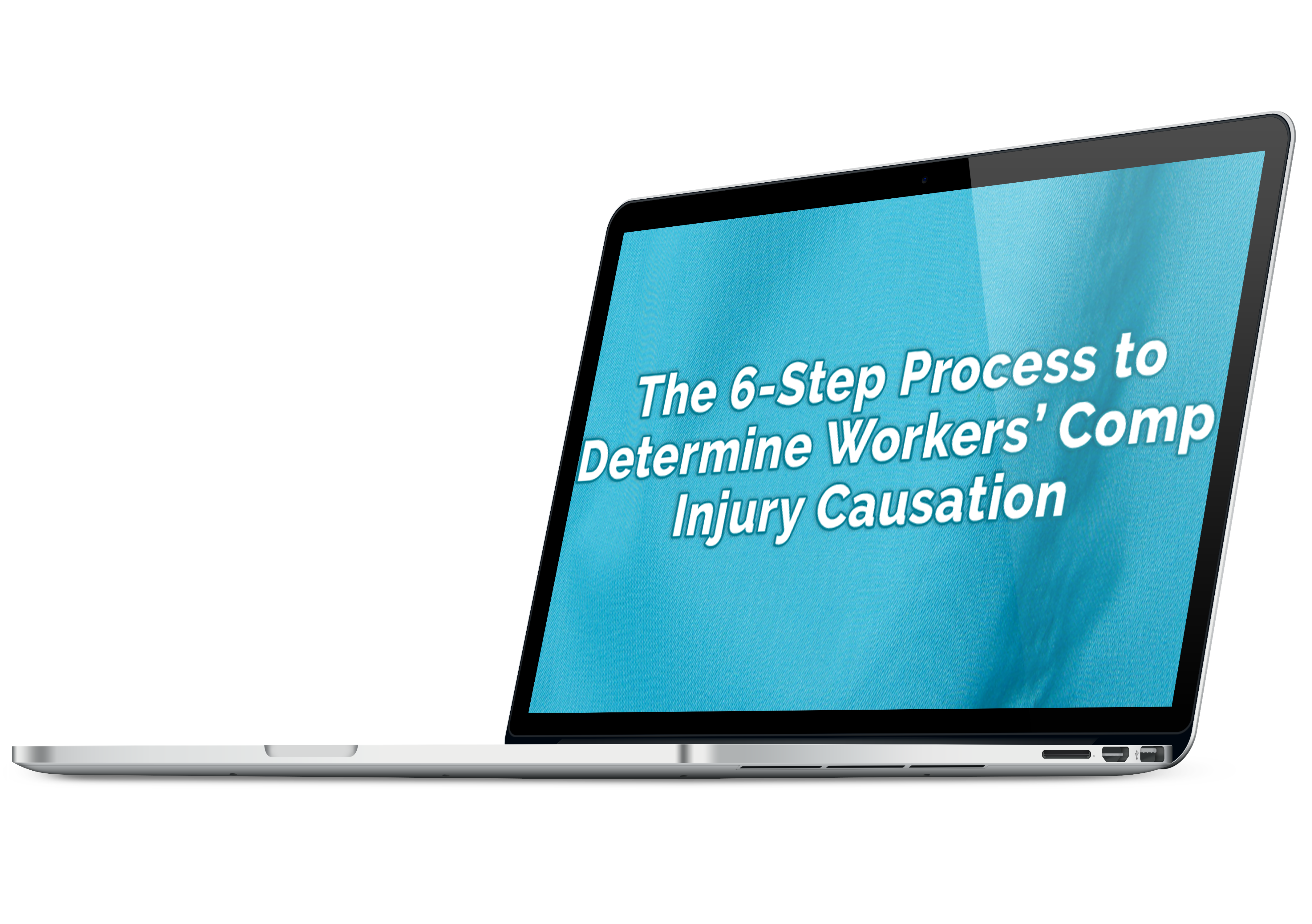
FOR WORKERS' COMP PROS ONLY
[FREE DOWNLOAD]
The 6-Step Process to
Determine Workers’ Comp
Injury Causation
Workers’ comp injury causation is a process, not an event. Determining whether an injury is work-related requires much more than a simple ‘yes’ or ‘no’ answer; it entails a series of steps, each of which must be carefully considered.
Learn The 6-Step Process To Determine Workers’ Comp Injury Causation
Review Evidence of the Disease - Dr. Jake: The first step in the process, evidence of disease, is usually fairly clear. In certain instances, you take into account some subjective factors, but for the most part, there are objective ways to document evidence of the disease, and it is pretty clear-cut.
Clinical Evidence of a Causal Relationship - In step two, clinical evidence a causal relationship exists, the adjuster/physician reviews published scientific research that supports a link between the functions an employee performs at work and the disease or injury which is present.
Evidence of Exposure - Evidence of exposure is an area where employers can make an impact on causation determination. A detailed description of the employee’s job functions greatly aids in the evaluation and determination of whether the injury was workrelated or not.
Consider Other Relevant Factors - Several other relevant factors must be considered when making an injury causation determination. Other factors to consider include comorbid conditions, age, gender, etc.
Judge Validity of the Testimony - In a causation determination, consideration needs to be given to the validity of the testimony of the injured worker. It must be decided whether their account of the events leading to the injury are accurate or falsely stated.
Make Causation Determination - The final step of the 6-step process is to carefully consider all of the factors and make the causation determination.

FILL IN YOUR DETAILS FOR ACCESS
